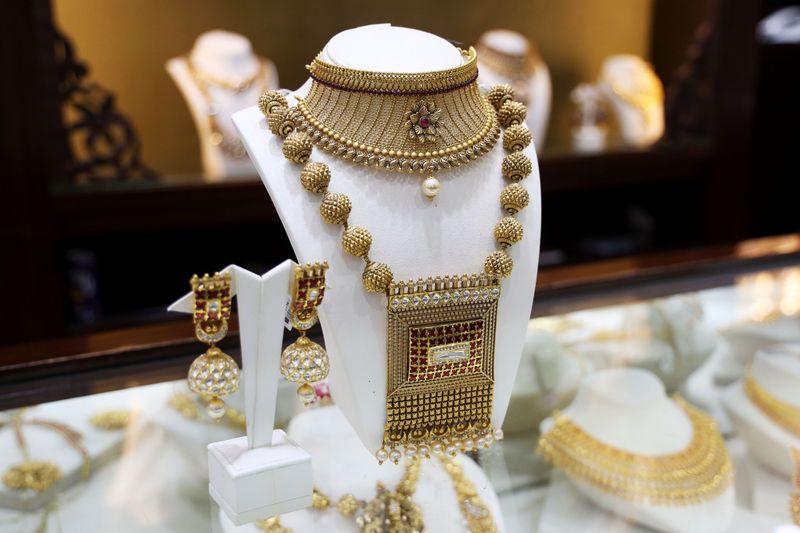RJ Market Watch
Why UAE gold shoppers are turning into sellers?

Dubai: The sudden and sharp rise in prices since June 20 has brought gold buying in the UAE to a near halt – but that doesn’t mean shoppers are not doing anything.
Gold prices shot up from Dh153 a gram on June 19 to Dh157.75 on the 20th, Dh159.25 on June 22 and 23, and then all the way up to Dh163.50 on the 25th.
“It was the trigger for shoppers to make a quick profit,” said Abdulsalam K.P., Executive Director at Malabar Gold and Diamonds. “Most of the coins and bars they were selling were bought over the last two to three years, when prices were in the Dh130-Dh135 a gram range.
“So when gold has touched Dh160 and more, sellers were pocketing a tidy sum.” (There is no VAT on individuals selling gold, provided the overall transaction comes under Dh350,000. Plus, there is no VAT on gold coins.)
In most instances, they were selling coins and bars for cash rather than picking up another piece of jewellery. And where sellers did not have coins or bars, they made do with trading in jewellery.
Retailers in the UAE now have schemes where sellers can trade in their old jewellery at nil cost, provided they were bought originally from stores within the UAE and other Gulf markets. Earlier, such trade-ins would have cost the seller Dh3-Dh4 a gram.
There is an inherent irony in the situation that UAE’s gold shoppers and retailers find themselves in now. Typically, the weeks leading up to the annual school and summer breaks typically sees a rise in gold demand, especially from South Asian expats. And most retailers do run promotions targetted at such purchases.
But this summer, it’s the retailers who are doing the purchases from the shoppers, be it coins, bars or jewellery.
Gold price undergoes minor correction
On Wednesday (June 26), gold prices went through a minor correction, dropping Dh3.5 to Dh160 a gram, but still quite some distance removed from the Dh152.5 of June 17. In these circumstances, retailers are not expecting shoppers to renew their buying.
Does he believe gold prices will continue to inch up despite corrections here? “Speculating on where gold is headed is not for retailers to say,” said Dhanak. “But for far too long – six years – gold was suppressed at between $1,150/$1,200 to $1,350. There were attempts to break past $1,380 an ounce, but that didn’t prove successful.
“But now that $1,400 has been crossed, I think the bottom of the price will move beyond $1,200.”
Retailers agree wholeheartedly that consumers need time to steel themselves to pay more for gold. “Demand will always be there in markets like the UAE, but consumers will need time to adjust to higher gold prices,” said Cyriac Varghese, General Manager at Sky Jewellery. “A week is too short a time to adjust to a Dh10 a gram hike. Plus, with each price increase, there will be a simultaneous rise in the VAT cost component.”
The VAT factor
Some in the gold trade keep hoping that local authorities will consider having a re-look at how VAT is charged on gold and jewellery purchases. Here, it is set on a “per gram” basis, while retailers believe charging VAT on the making charges component would boost demand even at times when gold prices are high.
“The trade has always requested the FTA (Federal Tax Authority) to levy VAT on the value-addition (i.e., the making charge component) as basic gold is exempt,” said Chandu Siroya, Vice-Chairman of Dubai Gold and Jewellery Group and owner of Siroya Jewellers, a wholesaler. “It’s very difficult to predict the price in times like these – volatility will continue for some time.”
Varghese also draws a link between VAT – or more precisely how it is calculated – and demand. “Our survival mode purely depends on volumes,” he said. “Therefore, if VAT can be on the value addition, it will be a big boost to the ailing trade. Or a reduced percentage on the entire piece would also have a positive spark for trade. The soaring gold price is going to be a real challenge to volume trade.”
Sort of a silver lining
But one thing is certain – gold is red hot as an asset once again. Last week’s price gains and the profit taking only reinforces its status as a safe haven asset… even with consumers. It’s not a detail that South Asian and Middle East buyers are going to forget any time soon.
“The trend that is more prominent is that of “old gold exchange” – customers who want to buy for the upcoming wedding season (in India) prefer to exchange their old jewellery for newer designs. It’s in response to this trend we launched the 0 per cent deductions in old gold exchange offer.”
Gold has seen it all
The rise in prices since last week will be another element that retailers and shoppers have to contend with. The jewellery sector went through an exceptionally difficult period last year, propped up small demand gains when prices dropped or during the holiday or festival seasons. The last bull run was during the final two weeks of December 2017, just before VAT came into effect on January 1, 2018.

This year, so far, demand had been fairly subdued, with shoppers willing to react only when prices dropped suddenly and came within their comfort range. The last seven days have seen these shoppers turn into sellers as they reacted to the sudden price spikes.
The only question is – When will they get back to buying again?
Courtesy: GulfNews
Image Courtesy: GULFNEWS.COM


















You must be logged in to post a comment Login